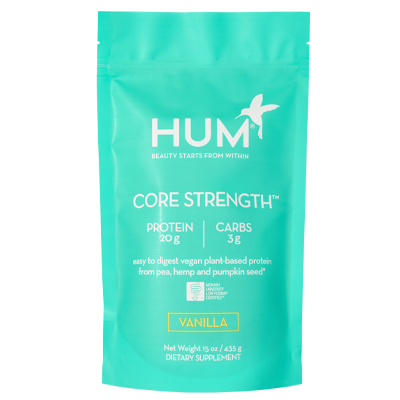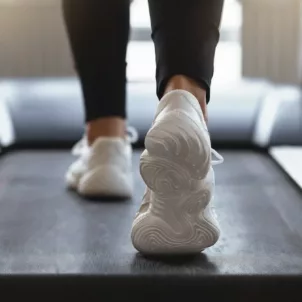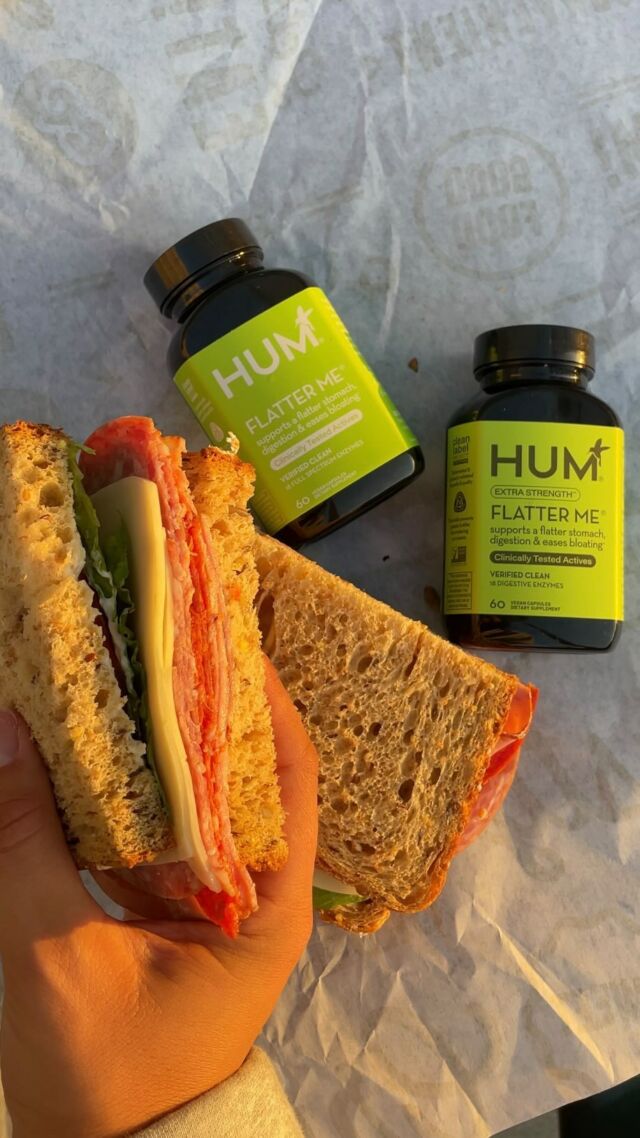What exactly is the difference between jogging vs running anyways? We spoke to experts to break down the benefits of each, the differences, and why both deserve a spot in your fitness routine.
When you start to pick up the pace during your walks and your heart begins to race, you may be wondering, “Am I running or jogging?” While your run can sometimes feel like a jog and your jog can feel like a run, there are some key differences between the two types of workouts.
“If a full sprint would be 10 out of 10 effort level and a leisurely walk a one out of 10, we would approximate jogging somewhere between a four and a five, and running would sit at a range of six to seven,” says Josh Honore, a NASM-certified personal trainer and STRIDE Fitness instructor at Xponential+.
Essentially, jogging is running at a lower intensity, so your muscles, including your heart, are working harder than they would be while walking.
“The physiological demands between jogging and running can carry dramatically,” Honore says. “VO2 max (the volume of oxygen the body is capable of converting into energy for exercise) and conditioning can affect what energy source the body recruits per activity.”
Below, we break down the differences between jogging vs running and offer tips on what you can do to build your way up to running if you’re looking to take things up a notch.
The Differences Between Jogging and Running

1. Your Form
“With jogging, stride length, foot strike, and stride turnover will vary from a full run,” Honore says.
When running, stride length, or the distance it takes you to cover one step with the right foot and one with the left, may shorten, as you’re taking more steps per second. Because your stride length is shorter, your foot strike will also change. Generally speaking, your feet make less contact with the ground with each stride when you’re running, so the turnover is quicker.
“Additionally, our stride usually shifts a bit further toward the forefoot, involving less of the mid-foot that contacts a bit more during jogging,” explains Honore.
While running, your arms pump much faster and you tend to lean forward more than you do when jogging, says Holly Roser, a NASM-certified personal trainer based in California. When you’re jogging, you’ll notice that you’re doing more of a “bounce” motion, she adds.
2. Your Heart Rate
During a run, your pace is going to be much faster than a jog, and because of this, your heart rate will increase. Ideally, your target heart rate during a run should be 60 to 70 percent of your max heart rate, while jogging heart rate is usually under 50 percent of your max.
You can calculate your max heart rate, you can use this easy formula: 220 – your age. This gives you beats per minute (BPM). Then, multiply that number by the percent of your max heart rate you’re trying to determine. For example, a 35-year-old going for a jog would take (220 – 35) * .50 = 92.5. They would aim to maintain a heart rate under 93 bpm during a jog. Fitness trackers that measure heart rate can be helpful for monitoring heart rate during exercise.
3. Your Level of Effort
A jog lands between a power walk and a run. “You can probably carry a conversation while jogging but not carry a conversation while running due to increased heart rate and exertion,” Roser says. “Running is moving your body at about six miles an hour with a 10-minute mile pace. If you’re moving less than that, you’re jogging.”
FYI: you have three energy systems: phosphagen, anaerobic, and aerobic. These energy systems convert food into energy in the form of adenosine triphosphate (ATP), according to the American Council on Exercise (ACE). Your phosphagen energy system kicks in when you’re doing short bursts of high-intensity exercise—one to 30 seconds—such as when you’re sprinting.
Meanwhile, anaerobic glycolysis doesn’t need oxygen and relies on glucose to form ATP. Anaerobic glycolysis is reserved for high-intensity activities that last a little longer, 30 seconds to three minutes max. On the other hand, aerobic glycolysis requires oxygen to make ATP from carbs and fat and is used for longer activities done at a lower intensity after the phosphagen and anaerobic systems have tuckered out, per the ACE.
Because jogging is done at a low to moderate intensity and at a steady state, you’re relying mostly on aerobic glycolysis. But depending on the intensity of your run, you can alternate between all three energy systems.
“Running is a far more intense expression and can begin to tap into our fight-or-flight response. This can signal the body to turn to glucose (carbohydrates) as a primary fuel source,” Honore says.
In fact, for high-intensity exercise of any kind, including running, 75 to 90 percent of total fuel calories will come from carbohydrates, according to the ACE. Low- to moderate-intensity exercise will also require carbs for fuel, but the need is much lower than high-intensity exercise. That’s why the ACE recommends consuming 50 to 70 grams of carbohydrates per hour during exercise. This can come from quick and convenient energy sources, like running gels or sports drinks.
Jogging vs. Running: Benefits of Both

Both jogging and running work your cardiovascular system and help with metabolic conditioning, but running will provide more benefits.
“Reaching towards 85 percent of more of our maximum heart rate for short periods at a time has shown to stimulate a ton of metabolic benefits,” Honore says.
Jogging Is Lower Impact Than Running
That said, jogging takes less of a toll on your body than running does. Because it’s lower impact and has less physical demand than running, it may be more enjoyable for you and help you stay consistent with a workout routine while promoting fat loss, Honore says.
Jogging Can Help You Cover Longer Distances
Jogging might also be a better option if you want to cover longer distances because it allows you to maintain a comfortable pace.
“If you’re getting ready to run more than seven miles, jogging is a great idea as it will help you maintain the same pace for a longer distance,” Roser says. “If you’re training for distance and not speed, jogging is a great way to pace yourself and work on moving distance rather than speed.”
Running Burns More Calories Faster
If you’re looking for a highly-efficient workout, running might be the better choice of the two. Working at a higher heart rate will help you burn more calories in a shorter amount of time, while a lower heart rate will help you gain endurance and burn calories, Roser says. Translation: You’ll burn lots of calories going on a short, fast run. So if you’re busy or only have a 20-minute workout in you (we’ve all been there), a run is a great option.
Jogging Can Build Endurance and Burn Fat
At a lower heart rate during a jog, you will be able to maintain your pace for a longer period of time, which will be beneficial for building cardiovascular endurance. Working at a lower intensity, such as when jogging, means that your body will pull energy from your fat reserves for fuel because the demand is less urgent, Honore says.
Running Can Help Improve Bone Density
Several studies have shown that the high-impact nature of running places stress on the bones, which stimulates them to strengthen. Another study found that long-distance running can stimulate growth hormones, which can improve bone metabolism (or bone-building efforts in your body). Why does this all matter? Strong bones are less likely to fracture—which is especially important as you age.
How to Go From Jogging to Running
If you normally jog and want to progress to running, Honore recommends working out in intervals by adding a few harder efforts into your jogging. For example, you can reserve 25 percent of your workout for running and divide it into 30-, 60-, and 90-second intervals. So for a 30-minute workout, you would dedicate seven and a half minutes to running, broken into five sets of 90-second efforts or seven sets of 60-second efforts, he says.
“Simply adding a few pushes into your jogging can start training your musculature and cardiovascular system to tolerate higher intensities,” he says. “Working indoors and adding a slight incline to your jog can also be a great way to begin conditioning your body for running.”
The Takeaway
The bottom line is that jogging and running are both great forms of exercise that contribute to your overall cardiovascular and metabolic health, but the best workout for you is the one that you like and can do regularly. Whichever you choose should also based on your fitness level. Your running speed might be someone else’s jogging speed—and that’s OK. As long as you stay consistent, you can always work your way up to running.









